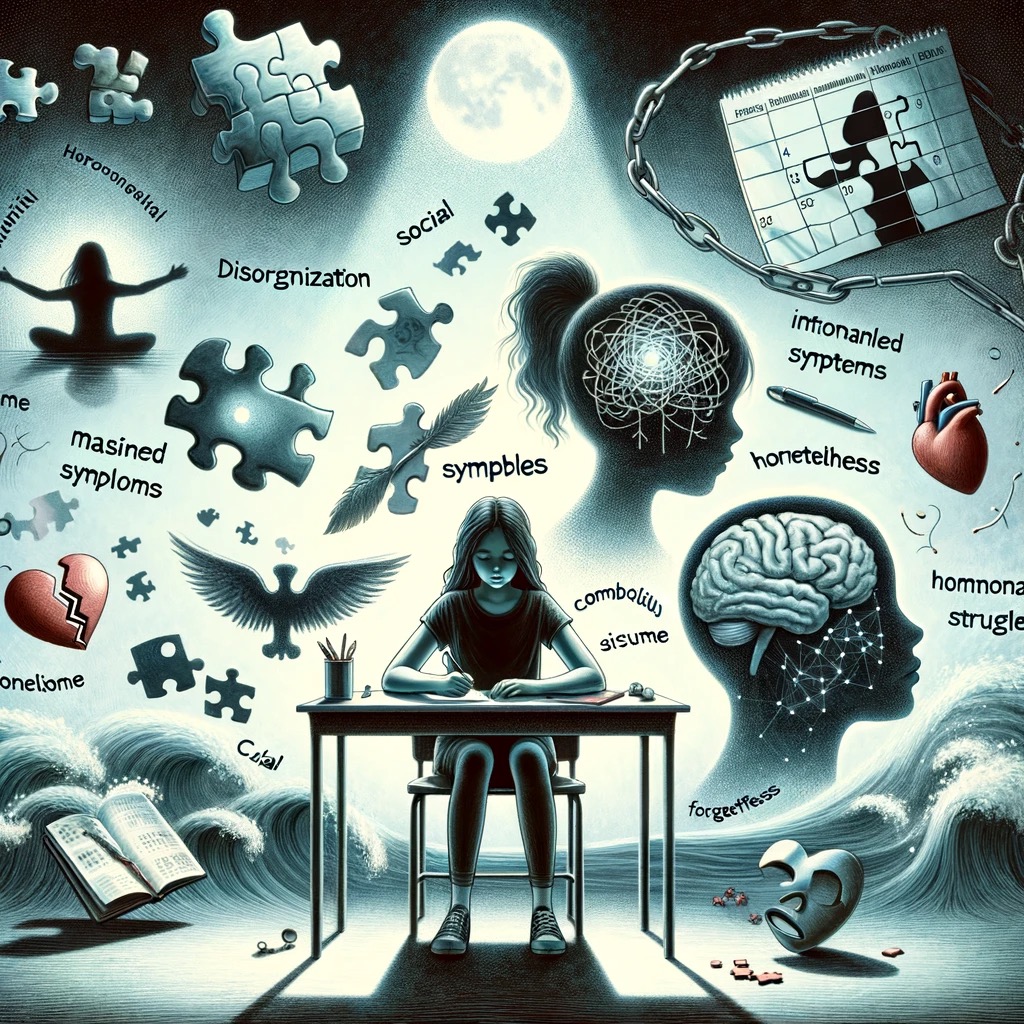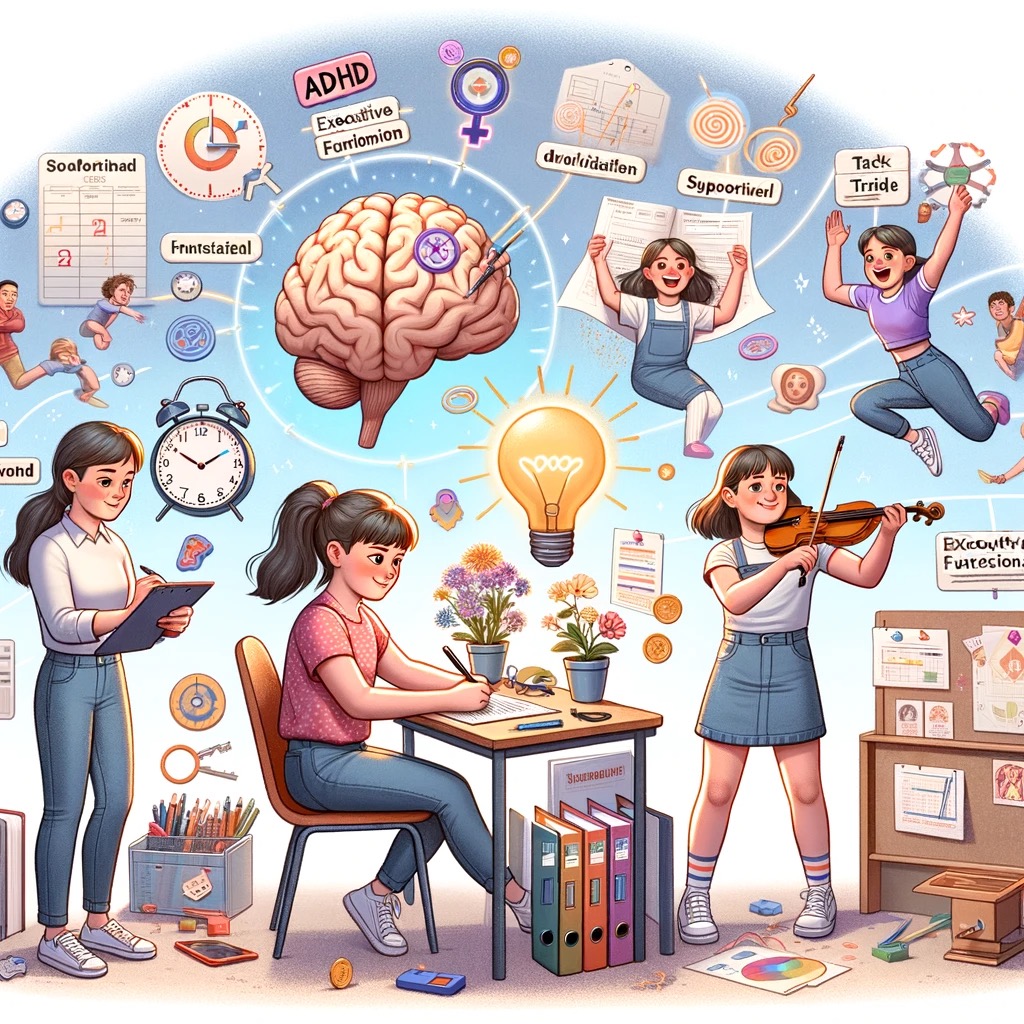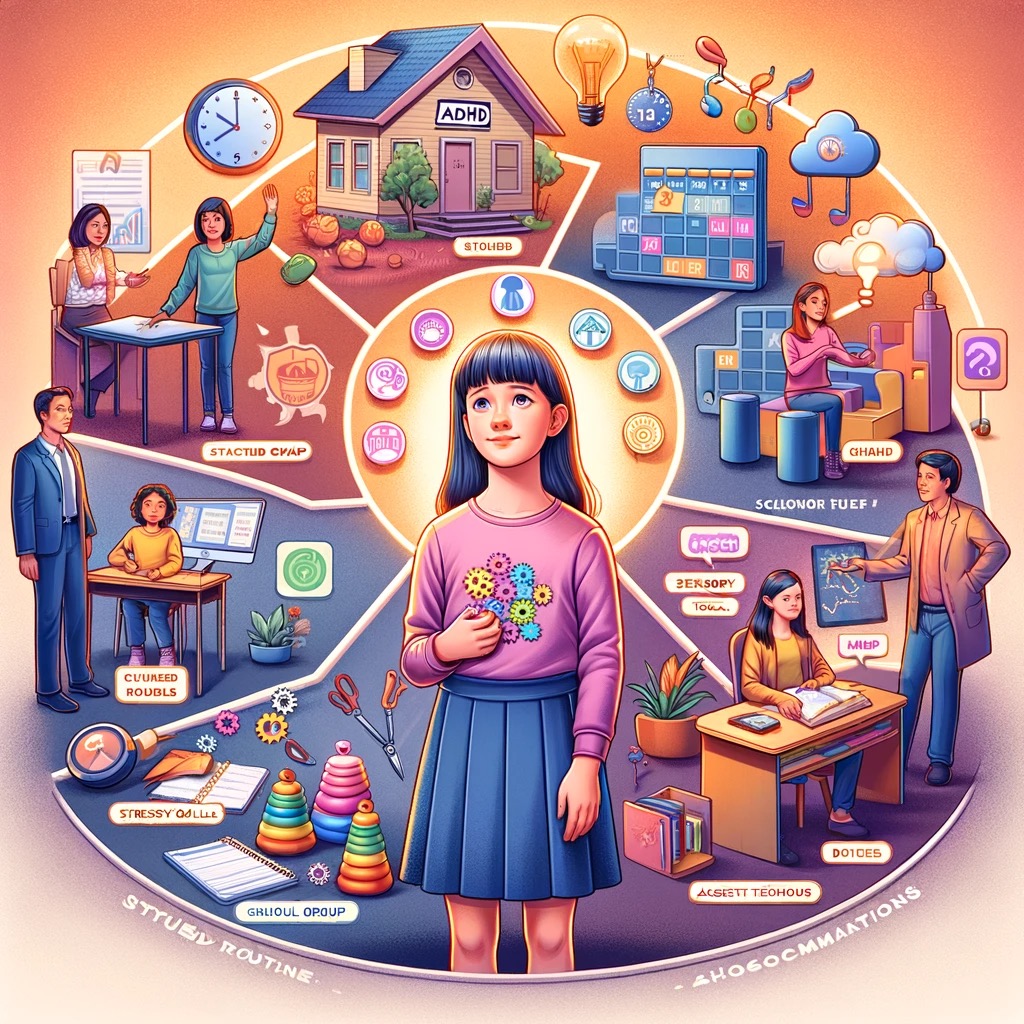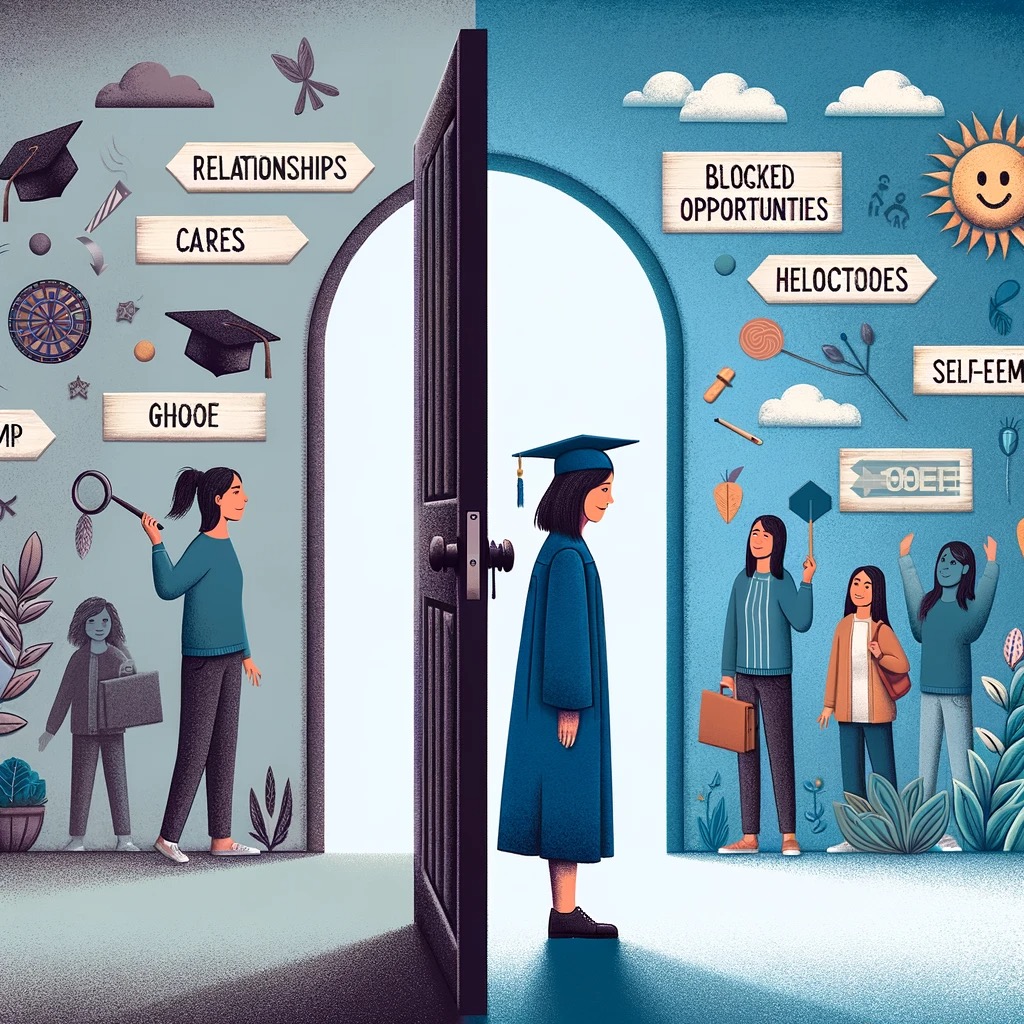Book review: Understanding Girls with ADHD: How They Feel and Why They Do What They Do
Overview
In Understanding Girls with ADHD: How They Feel and Why They Do What They Do, Nadeu et al argue that a girl’s experience of ADHD, especially during their elementary, middle, and high school years, differs from that of boys. Girls tend to internalize their ADHD in ways that can be isolating and damaging to their self-confidence over time. For example, relationship friction from impulsive behaviors can lead to more peer rejection. To gain acceptance, they might turn to unsafe activities as they give in to peer pressure. The repeated failures that come with executive dysfunction (always late, disorganized, forgetful, procrastinating, overwhelmed) can also batter self-worth. Parents can counter this self-negativity by teaching their children to recognize their strengths and praising them for what they do right. A parent’s biggest influence can be to install a sense of hope in their children.
One of the main themes the authors make is that girls experience unique challenges with ADHD. Some of these behaviors apply to inattentive ADHD, and others to impulsive ADHD. For example:
- Girls with impulsive-type ADHD may be more aggressive, controlling, verbally jarring, etc., leading to more friction and disruption in relationships. The behavior can cause them to be rejected by their peers.
- Girls have certain cultural expectations (be supportive, helpful, comforting, etc.) that might not welcome a more aggressive, competitive behavior. As such, the impulsive ADHD experience can be especially challenging because the behaviors work against societal norms.
- Additionally, because a girl’s world tends to be defined more by relationships, emphasizing collaboration over competition, peer rejection can be especially isolating.
- To try to gain peer acceptance, girls with ADHD might be more likely to use drugs or alcohol to gain acceptance, or to become promiscuous.
- Fluctuating hormone levels, as girls go through puberty, can exacerbate mood swings, irritability, and other issues. Emotional dysregulation can create emotional roller coasters.
- Frequent and repeated failures from executive dysfunction can lead to an internalization of negativity and a loss of self-confidence. Years of criticism for forgetfulness, disorganization, being late, missing assignments, losing things, saying things that turn away friends, and more can lead to an internalized negativity. They may frequently blame themselves and feel bad about their lack of accomplishments and absence of talents. Not only can this negativity lead to feeling demoralized and a loss of confidence, but psychiatric disorders (such as eating disorders or self-harm) can develop.
- It’s important for parents to counter this frequent negativity with positive reinforcement, installing a sense of confidence and hope by praising what the person does right rather than always pointing out what they’re doing wrong. Parents should try to help their ADHD children feel confidence and hope.
- At least one parent usually has ADHD themselves, so ADHD parents may be struggling with their own challenges of self-worth and confidence as they parent their children, leading to tense relationships.
Parental support
It’s important for parents to recognize ADHD in children early so that they can provide better support systems and increase understanding. Just reading this book and others has helped me be much more patient when I see emotional dysregulation (outbursts over the smallest issues, followed by repairs/apologies after a short cooldown period), or when I see a child’s room always disorganized (the messiness that never goes away), or the frequent forgetting of assignments or events (overdue homework that piles up until it becomes overwhelming).
In my family, some have inattentive ADHD, others impulsive ADHD, and some both types. So as the author described the different challenges and patterns/manifestations of ADHD, the descriptions often resonated strongly, and at times I wanted to write names and exclamation marks in the margins of the book (something I usually avoided).
I should note that I’m not an expert in this domain by any means. I read to learn, and I write to share my learning journey. It’s kind of amazing that so many different manifestations stem from the same underlying neurodivergent conditions — a point the authors make. The inattentive daydreamer who suffers from anxiety and disorganization but who listens and empathizes with others seems 180 degrees different from someone with impulsive, controlling behavior whose high energy can be infectious and energizing until it spills over into screeching friction that drives everyone crazy. Yet at the root, their neurons are wired in similar ways.
One point the author mentions is that it doesn’t matter whether you have ADHD or not: what’s good for someone with ADHD is usually good for neurotypicals as well. For example, tracking all tasks and to-do’s in one place, using checklists as reminders, establishing routines, finding extracurricular activities or sports to build competence and confidence, implementing meditation techniques, setting bedtime rituals, getting good nutrition, or other strategies — these are helpful for everyone. It’s like accessibility with web design: the principles hurt no one (e.g., adding alt tags for screen readers); in fact, they only strengthen the experience for everyone.
It’s easy for parents to think medication will provide an easy solution. This was one of my first inclinations. However, the authors note that getting medication right can be complicated. Finding the right medication and dosage requires trial and error. But even more challenging, ADHD usually co-presents with other disorders (OCD, anxiety, dyslexia, oppositional disorders, and so on). Stimulant medication that helps with ADHD can make other conditions worse. It doesn’t take long before a kid turns against medication that makes her irritable, sweaty, and not herself — lumping all medication in the same bucket. Even when medication helps, many of the challenges still remain.
Detailed book summary
Want more detail about the book? This section provides an AI-written summary of the book. To generate this summary, I first voice-typed my favorite passages, notes, and themes from the 300-page book (using Google Meet’s transcription feature). The result was about 23 pages of material. Then I asked Claude.ai to provide a summary of the content.
This summary will likely be slanted toward my own interests and callouts from the book. I’ve only lightly edited this part, as it seems accurate to me. I originally intended to use this list in my earlier summary but decided to just write it manually instead.
Unique aspects of ADHD in girls

- Girls tend to present primarily with ADHD inattentive symptoms rather than hyperactive/impulsive symptoms. Their distractibility, disorganization, and forgetfulness tend to be more internalized and often get overlooked.
- While boys with ADHD tend to externalize their struggles through disruptive behaviors, girls internalize things more. They are more likely to blame themselves, feel ashamed, and suffer from low self-esteem due to criticism about their ADHD impairments.
- Girls suffer more social friction and peer rejection due to their ADHD symptoms compared to boys. Their issues with relationships and friendships tend to bother them profoundly. These social problems then further damage their self-image.
- Girls with ADHD have much higher rates of developing comorbid psychiatric issues like anxiety, depression, eating disorders, addiction, and self-harm behaviors. Their ADHD symptoms put them at risk for relying on dangerous coping strategies.
- Girls often try too hard to overcompensate for their ADHD struggles in order to meet unrealistic expectations. They attempt to mask their underlying executive functioning issues. As a result, their ADHD problems are often overlooked and remain undiagnosed.
- Girls with ADHD can remain quite functional until major hormone changes like puberty, pregnancy, and menopause. Then their ability to compensate deteriorates. Their symptoms worsen noticeably when estrogen levels drop.
Importance of early identification and intervention

- Identifying ADHD early in girls and providing appropriate treatment increases the chance that they will experience academic and social success. Early intervention prevents years of damage to their self-confidence.
- Providing girls with ADHD a consistent sense of hope regarding their abilities helps motivate them to remain invested in school. Praising effort and strengths is key rather than criticizing weaknesses all the time.
- Adults need to reassure girls that ADHD symptoms are due to a neurobiological disorder rather than personal flaws. Reframing ADHD traits as unique strengths and gifts helps girls develop a positive identity.
Changes during adolescence

- Puberty brings worsening of ADHD impairment as executive functioning weaknesses are exacerbated by increased academic demands of middle/high school. Organization and planning problems become more obvious.
- Social pressures intensify for all teens, but especially adolescent girls with ADHD. Their peer rejection and social struggles common in childhood often worsen and contribute to anxiety, depression, and other issues.
- Many girls lose confidence in themselves and their abilities as middle/high school academic and organizational demands exceed their executive functioning capacity. School becomes very stressful.
- Emotional dysregulation and intense mood swings emerge or worsen in puberty for girls with ADHD due to hormonal changes. Their emotions easily spiral out of control over minor problems.
Emotional impact

- Girls with ADHD suffer from more internalizing symptoms like isolation, guilt, shame, low self-worth, and depression. Their self-esteem is deeply wounded by criticism about their ADHD impairments.
- They struggle significantly with emotional dysregulation. Girls with ADHD experience more intense mood swings, irritability, and overreactions to small frustrations. Their strong emotions frequently impair sound decision making.
- Seeking affirmation, acceptance, and intimacy due to their low self-esteem, girls with ADHD are especially vulnerable during the teen years to risky sexual behaviors, alcohol/drug abuse, self-harm, cyber-addictions, and other dangerous coping mechanisms. Promiscuity, multiple partners, and unprotected/inconsistent birth control use are common.
Developing executive functioning skills

- Parental support in establishing routines, modeling organizational skills, providing reminders, etc. is crucial in helping girls with ADHD strengthen their executive functioning over time in areas like emotional regulation techniques, planning abilities, task initiation, time management, etc.
- Extracurricular activities like sports, music, theater, volunteering, etc. provide beneficial structure and routine. They limit time for risky behaviors and help girls build competence, agency, resilience, social connections, and self-confidence through achievements.
- Working one-on-one with an ADHD coach or therapist using cognitive behavioral approaches can help girls reframe negative thought patterns surrounding their symptoms. These professionals also teach critical life skills.
The Importance of support and accommodations

- Girls with ADHD rely heavily on having a high level of structure, routine, and parental support. Even small disruptions to their system can cause their executive functioning to spiral.
- Schools need to provide classroom accommodations for girls with ADHD such as frequent sensory breaks, opportunities for small group learning, access to coaches and tutors, appropriate assistive technologies, reasonable extensions on assignments, etc.
- Parents must advocate passionately to get their daughters placed in optimal school environments suited to the girls’ unique needs and strengths. The right school setting makes a huge difference.
Lifelong impacts

- Without proper diagnosis and treatment, girls with ADHD often grow up to experience repeating failures in relationships, difficulty keeping jobs, lost potential, few accomplishments, and chronically crippled self-esteem.
- Young women with ADHD need a great deal of help establishing concrete, achievable goals and finding optimal career paths suited to their strengths. Surrounding themselves with supportive systems is key too.
- Learning self advocacy skills to successfully manage their disability is crucial for success. Each girl also needs to find areas where she feels competent and celebrated. Focusing on hope, talents, and strengths is imperative.
Challenges and solutions
As I read, I’m looking for hacks and other solutions that can help with ADHD. I have a bent for identifying concrete takeaways from books that I can implement in specific ways. As such, this section distills a list of challenges and potential solutions. I’ve organized these tips into four sections: school, social/emotional, executive function, and confidence. (The authors don’t organize information in these categories nor always provide concrete solutions and tips.)
I tried to put the more concrete ideas higher up in each table, but they aren’t in any particular order. Also, these are the particular challenges that I selected based on what seemed most relevant to my family and me.
School
| Challenges girls with ADHD face | Possible solutions |
|---|---|
| Frequently turns assignments in late | Create a daily checklist for homework assignments and due dates |
| Gets ambushed by assignments that required reading of a book over weeks | Use a planner to track and be aware of dates |
| Finds reading challenging and effortful | Provide audiobook alternatives, so they can listen while doing something else (e.g., playing video games or walking) |
| Unfinished homework snowballs and becomes overwhelming | Stay on top of homework each day to avoid pile-up. Check assignments daily. |
| Procrastinates homework and other required tasks until late, then gets shortened sleep | Establish rewards as incentives; link phone privileges to school performance |
| Becomes talkative and chatty in class with peers, easily distracted | Ask teacher to seat student away from close friends to allow focus |
| Loses focus, attention during long lectures | Encourage doodling and drawing during class, including sketchnotes |
| Executive functioning issues become worse during certain times of day | Identify times of optimal productivity and schedule challenging classes during these times |
| Need for creative expression | Provide artistic opportunities like ceramics or drawing |
| Difficulty getting everything done | Limit the number of obligations and simplify the schedule |
| Demotivated by mean, critical teachers | Identify teachers who are nice, encouraging, and supportive |
| Feels lost in large, impersonal learning environments | Seek out smaller classes with greater personalization |
Social/Emotional
| Challenges girls with ADHD face | Possible solutions |
|---|---|
| Experience social isolation and difficulty fitting into peer groups | Participate in structured extracurriculars/sports with built-in peer groups |
| Struggles with emotional regulation | Teach how to use a calm meditation app to lower stress levels; teach cognitive behavior therapy (CBT) techniques of grounding self outside the mind |
| Unstructured, escalating free time with others results in social meltdowns | Schedule structured friend sessions with clear time limits and supervision |
| Tends toward aggressive, controlling, bossy behavior | Provide more autonomy and independence over specific areas; check against gender stereotypes about male/female behavior |
| Makes impulsive comments then feels remorse | Recognize the impulsiveness in the moment, ignore it for 30 minutes. Allow person to regain control of hijacked amygdala. |
| Struggle to maintain friendships due to impulsivity | Encourage fewer, higher-quality friends |
| Overreacts with anger when perceiving unfairness or injustice | Recognize sensitivities and the potential to over-index on injustice |
| Finds transitions are challenging and dysregulating | Provide decompression periods between activities |
| Has picky eating habits, either due to textures or other eating disorders | Serve preferred foods, and gradually introduce new foods in small amounts |
| Emotionally fragile and prone to meltdowns when stressed | Plan ahead and think through contingencies to avoid stressful situations |
| Blames others frequently | Build self-confidence and personal accountability |
| Uses sexual promiscuity as a coping mechanism for acceptance | Have open conversations about healthy relationships and self-worth |
| Uses alcohol, smoking, drug use for peer acceptance | Set clear expectations and discuss risks of unsafe activities; find peer acceptance through structured activities, extracurriculars, sports |
Executive function
| Challenges girls with ADHD face | Possible solutions |
|---|---|
| Forgetful and disorganized | Use planners and calendars to track obligations; establish routines and checklists; work with an ADHD coach on organizational skills |
| Overwhelmed by complex tasks | Break down tasks into smaller steps |
| Disorganized and loses school supplies/belongings | Create super organized homes with clear labels and places for everything |
| Overwhelmed when given multiple instructions | Simplify multi-step directions; follow mono-tasking |
| Sleep, nutrition | |
| Feels overwhelmed by endless stuff everywhere | Reduce clutter and designate storage spots |
| At higher risk for driving accidents | Provide more supervised practice behind the wheel until driving becomes automatic |
Confidence
| Challenges girls with ADHD face | Possible solutions |
|---|---|
| Overly self-critical, has poor self-image | Offer frequent praise and positive feedback |
| Feels intense self-criticism and doubt; views self as lacking talents | Develop islands of competence through jobs, hobbies, sports, or extracurriculars |
| Lacks confidence for self-advocacy | Practice speaking up assertively about needs |
| Experiences anxiety about meeting academic and social expectations | Teach healthy thinking patterns |
| Is hyper-sensitive to criticism | Develop resilience to feedback |
| Avoids committing to long-term interests | Take career skills tests to identify lasting strengths and talents |
Conclusion
If you have daughters with ADHD, Understanding Girls with ADHD: How They Feel and Why They Do What They Do will probably be highly relevant. The authors are comprehensive and describe the challenges girls with ADHD face at all school ages. The book was originally published in 1999 and updated in 2015, so there’s not as much about social media as one might hope. Even so, the book offers a lot of insight into unique challenges that girls with ADHD face that I wasn’t aware of before reading the book.
Note that images in this post were generated from DALLE.
About Tom Johnson

I'm an API technical writer based in the Seattle area. On this blog, I write about topics related to technical writing and communication — such as software documentation, API documentation, AI, information architecture, content strategy, writing processes, plain language, tech comm careers, and more. Check out my API documentation course if you're looking for more info about documenting APIs. Or see my posts on AI and AI course section for more on the latest in AI and tech comm.
If you're a technical writer and want to keep on top of the latest trends in the tech comm, be sure to subscribe to email updates below. You can also learn more about me or contact me. Finally, note that the opinions I express on my blog are my own points of view, not that of my employer.
